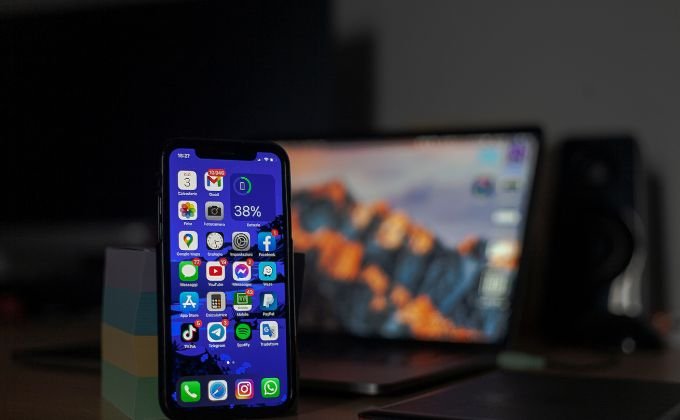Introduction to the Digital Learning Revolution
Education has always adapted to the tools of its time, from chalkboards to projectors and now to smartphones and tablets. In today’s fast-paced world, mobile devices have become more than just communication tools; they are powerful instruments that transform the way people learn and teach. Platforms like Nauči KaKo show how learners can access knowledge anytime, anywhere, and reshape their educational journey. This shift is not just about technology—it’s about accessibility, personalization, and empowerment in learning.
The Accessibility of Knowledge
One of the most significant contributions of mobile devices to education is accessibility. Students no longer have to depend solely on libraries or classroom hours to study. Instead, they can carry a virtual library in their pocket. With educational apps, e-books, and online platforms, learners from different parts of the world can study the same subject matter with just a few taps. The democratization of knowledge allows people in rural areas or underprivileged communities to access quality education, bridging the gap between traditional barriers and modern opportunities. By using apps like Nauči KaKo, learners can simplify complex topics, break down lessons into manageable sections, and make knowledge more engaging.
Personalized Learning Experiences
Mobile technology has shifted learning away from a one-size-fits-all approach. Every student learns differently—some are visual learners, while others prefer audio explanations or interactive exercises. Mobile apps and platforms provide diverse formats such as video lessons, quizzes, podcasts, and interactive simulations to meet these different needs. Learners can progress at their own pace, revisit challenging concepts, and explore topics beyond the classroom curriculum. This personalization enhances both comprehension and retention, making learning more effective.
Enhancing Engagement through Interactive Tools
Traditional education methods sometimes struggle to keep students engaged, especially when lessons feel monotonous. Mobile devices introduce interactive elements like gamification, augmented reality (AR), and collaborative platforms to keep learners actively involved. For instance, gamified quizzes reward students with points or badges, motivating them to participate more enthusiastically. Augmented reality apps can bring history, science, or geography lessons to life, making abstract concepts tangible. By merging education with interactivity, mobile devices foster deeper curiosity and active learning.
Global Collaboration and Communication
One of the overlooked benefits of mobile devices in education is the ability to connect globally. Students can now collaborate with peers, educators, and experts from different parts of the world through video conferencing, social media groups, or educational forums. This connectivity enhances cultural awareness, encourages exchange of ideas, and allows learners to participate in projects that extend beyond their local communities. It also prepares them for a globalized workforce where cross-cultural collaboration is essential.
Bridging Formal and Informal Learning
Mobile devices blur the line between formal education in classrooms and informal learning outside of them. A student might attend lectures during the day and later use apps like Nauči KaKo for revision, problem-solving, or exploring related topics in more depth. Podcasts, educational videos, and online discussions make learning a continuous process that fits seamlessly into everyday life. This flexibility empowers learners to take ownership of their education, moving beyond passive consumption to active exploration.
Support for Teachers and Educators
Teachers also benefit from the integration of mobile devices in education. These tools provide them with resources for lesson planning, student assessments, and professional development. Apps allow educators to monitor student progress in real-time, adjust teaching methods, and provide instant feedback. Mobile technology also enables teachers to connect with parents, creating a stronger support system for students. In this sense, mobile devices are not replacing teachers but equipping them with innovative tools to enhance their teaching effectiveness.
Challenges in Mobile Learning
Despite the many advantages, integrating mobile devices into education comes with challenges. Issues such as screen fatigue, digital distractions, unequal access to devices, and concerns about data privacy need to be addressed. Additionally, not all educational content is of equal quality, so learners must carefully select trustworthy resources. Educators and policymakers must work together to create guidelines that maximize the benefits of mobile learning while minimizing potential drawbacks.
The Future of Mobile-Enabled Education
The future of learning is undeniably tied to mobile technology. As 5G networks expand and mobile applications become more sophisticated, education will become even more interactive, personalized, and globally connected. Emerging technologies like virtual reality (VR) and artificial intelligence (AI) are likely to further enhance mobile learning, offering immersive experiences and adaptive teaching methods. With platforms like Nauči KaKo paving the way, the future promises an education system that is more inclusive, dynamic, and tailored to individual needs.
Conclusion
Mobile devices have revolutionized education by making it more accessible, personalized, and engaging than ever before. They empower learners to explore knowledge beyond traditional classrooms and connect with global communities of students and educators. While challenges exist, the potential of mobile technology in transforming education is immense. As society continues to embrace digital innovation, the role of mobile devices in learning will only grow stronger, shaping the way future generations acquire skills and knowledge. By integrating platforms like Nauči KaKo into everyday study routines, students can make learning more effective, enjoyable, and future-ready.


